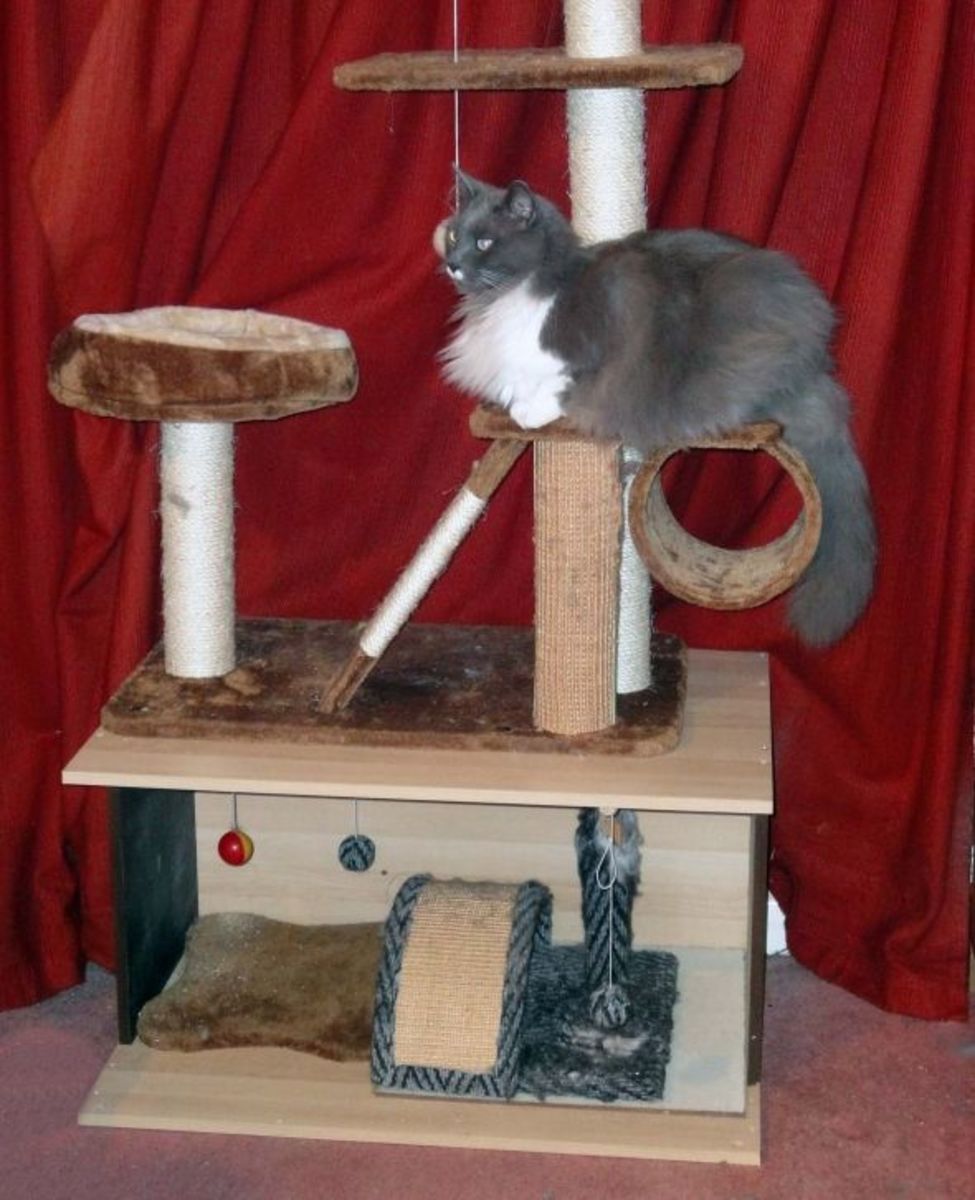Training A Cat - Cat Behaviour Problems
Train a Cat? Is this even possible?
Well, whether you're just curious in knowing the answer to the question ("is training a cat possible?), or you have specific cat problems or cat behavior you want to resolve, here is some information which will help you.
Clearly, cats and dogs are different. If you want to train your cat to sit, stay or heel, then you might want to consider getting a dog instead. If you'd be happy training your cat to use the litter box instead of the comforter, closet or your shoes; or using the scratching post instead of the stereo speakers, then this Hub is for you.


Cat Training – How Cats Learn
Since cats don't speak English (or whatever language you normally use), and you don't speak “feline,” then you need to know how cats learn. If you observe a mother cat and her kittens, you'll quickly see Mom rewarding her kittens for good behavior. This is how kittens and cats learn.
How to train a cat? Cats learn by experience, and just as importantly, cats choose to be as comfortable as they possibly can be. With this in mind, the rule of the day for cat training is – if the experience is good, then the cat will repeat it, and if the experience is bad or unpleasant, then the cat will avoid it. The key to training a cat is to make sure whatever you want your cat to do is very pleasurable and rewarding for the cat; AND whatever you do not want your cat to do is not pleasant and never fun or rewarding.
Occasionally, you unintentionally reward behavior you don't want. For example: it's an early hour of the morning. You're still blissfully asleep...but not for long. Your cat pounces on you and/or starts meowing up a storm or otherwise becomes a major pest. What do you do? You get up and feed the cat, or pet the cat, or let the cat outside. Kitty has just learned his behavior gets him exactly what he wants. Therefore, the cat behavior you don't want continues.

- Cat Behavior - Cat Training
Some excellent products on Cat behavior and Cat training. All different types of books & products in many different price ranges.
Cat Behaviour Problems
Sometimes owners get frustrated because they can't seem to catch the cat in the act of doing the prohibited behavior, so they show the cat the evidence (wet spot on the carpet, shredded drapes, etc.) and then discipline the cat. Grabbing the cat, shoving it's nose in the wet spot (or showing the shredded drapes), yelling, and then shoving the cat into the litter box is not going to accomplish anything. It certainly isn't going to solve your cat behaviour problems.
Well, actually it will accomplish a couple of things. Your cat will learn that being caught is a bad experience & the litter box is a torture chamber. Reprimands simply do not work when training a cat. If you catch your cat in the act, then he'll only misbehave when you're not around. If you punish the cat after the act, then the cat will associate the reprimand with the crime. Either way, the behavior continues. Some cats will even misbehave just to get attention, and the attention is enough of a reward to cause the cat to continue behaving that way. So what do you do?
Cat Training Plan
Stop all reprimands & punishments – no matter what the cat is doing. Make your relationship with your cat fun, playful and rewarding. Occasionally, this alone will stop the bad behavior. Cats can become overactive and destructive when they get bored. Cats that feel neglected often stop using the litter box.
A major point here - do NOT EVER hit a cat. It doesn't work. The cat never learns what you're trying to teach this way, AND they learn never to trust you, and will not become a loving cat.
Making sure to have regular time with your cat, giving him/her your undivided attention and playing games will have huge impact on their behavior...even litter box problems can disappear almost overnight. The amount of time doesn't have to be a lot – 10 or 15 minutes a day or night is usually enough.

The most effective method of cat training is by rewarding the cat. Praise him for his good behavior. For litter box training – remember, a cat's system is regular. You have control over the feeding, and therefore you control the output. Kitty should have a regular feeding schedule so he has a regular output schedule. Adjust the feeding time so you can be present when he needs to go. When he uses the litter box, praise the heck out of him! Give him a treat for his good behavior.
Scratching problem? First, make kitty's scratching post fun & enjoyable. Make sure it's big enough for him/her to play & scratch on. Also, if your cat enjoys catnip, rub some on the scratching post. Now, you need to make your furniture unappealing to your cat. Instead of telling your cat to avoid the furniture, let the furniture tell the cat to stay away. Each cat is different, but you have several choices to make your furniture unappealing. Most cats don't like to snag their claws when scratching, so you might consider putting some netting or tulle cloth over the furniture. Some cats don't like the feel of aluminum foil or two-sided sticky tape. A mild menthol or a citrus scent will repel many cats.
Once your cat realizes your furniture is not fun to scratch on, and he/she has wonderful times using the scratching post, the inappropriate scratching will disappear.
Another good tip for training a cat is the fact that cats hate loud noises. So if you make a loud noise (like clapping your hands together, or using a clicker device). The cat normally makes the connection between doing the "bad" behavior and the loud noise - and will stop doing the unwanted behavior.
Remember, cats learn best through positive reinforcement (rewards) and praise.
Your cat is a member of your family. Spend time with your cat each day, even if it's only for a short while. Doing so will reap rewards – you'll be happier & your cat will be happier.










